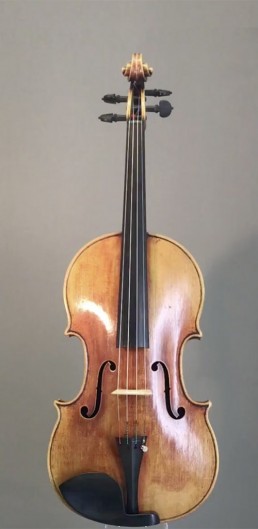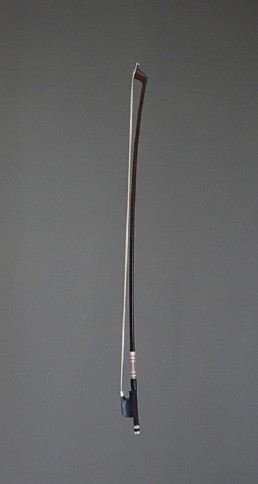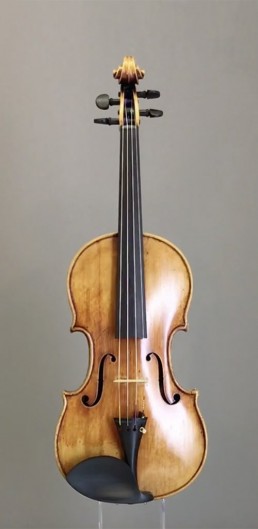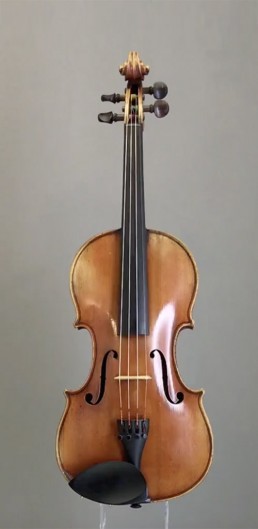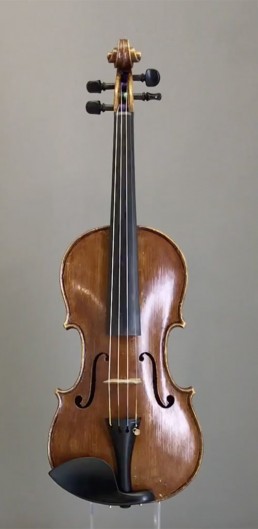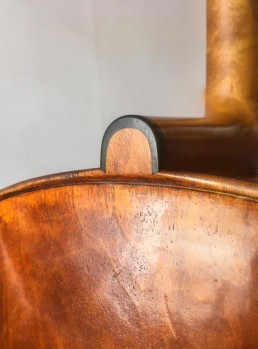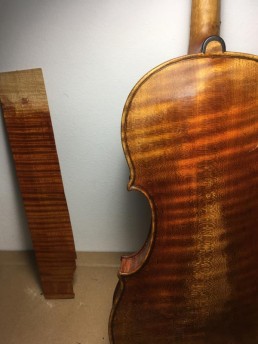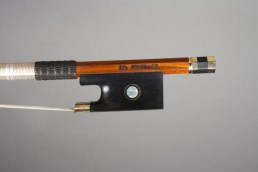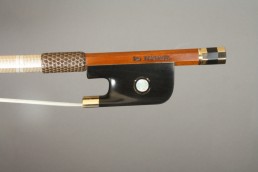Cello bow, PIERCE, Robert
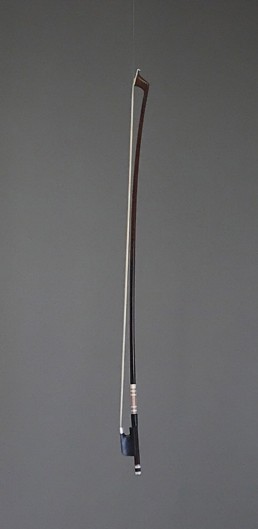
Cello bow made by Robert Pierce, silver and ebony mountedPrice on request
Emilio Crabbe

I discovered my passion for violin making at the age of 14 when visiting Thomas Bertrand’s workshop in Brussels. The following year I started a three years apprenticeship with François Bodart, renowned viola da gamba maker.
From 2010 to 2013 I studied at the Newark School of Violin Making and graduated with distinction. That same summer I started working for Stephan von Baehr in Paris where the main focus is making copies of Cremonese instruments.
In 2015, I was lucky to join Stephan to the Oberlin workshop in America where we demonstrated the antiquing of a cello.
In 2016 Stephan and I received a certificate of merit at the Violin Society of America for a violin made in common.
In September 2019 I left Stephan’s workshop and started making my own instruments.
I am currently working in Taiwan (Zhongli) with my wife Chiling Chen.
We like to collaborate with friends and colleagues around the world.
Catherine Janssens has several of my instruments on show in her worshop in Brussels.
Eric Fournier

Eric Fournier discovered bowmaking at the age of 11. He served his bowmaking apprenticeship for more than 10 years with the most prestigious makers.
Since 2012, he set up his own and work all around the world. He is mainly establish south of France and often come to Brussel working with the violinmaker Catherine Janssens.
Awards
Hors-concours at international competition of the Violin Society of America
2008 Portland
- Certificate of merit Violin
- Certificate of merit Cello
- Gold medal for Violin
- Gold medal for Viola
- Certificate of merit for Cello
2014 Indianapolis
- Certificate of merit for Violin
- Gold medal for Viola
- Gold medal for Cello
- Gold medal for Bass in collaboration with E.Bégin
2016 Cleveland
- Certificate of merit for Violin
- Gold medal for Viola
- Gold medal for Collo
Concours international Étienne Vatelot
2011 Paris
- Médaille d’argent pour Alto
Concours un des Meilleurs ouvriers de France
2014 Paris
- Darling international Bow Making Competition
2016 Amsterdam
- Grand Prix for Workmanship for Violin
- Grand Prix for Workmanship for Viola
- Player Award for Violin
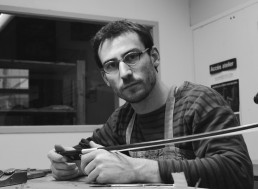
Lutherie Collectives: The Wisdom of Crowds
Violin making is traditionally a solitary career, so why are so many luthiers and bow makers choosing to join collectives? Peter Somerford talks to the founders and members of such groups around the world to discover the benefits of pooling resources, knowledge and time.
Acoustical properties of wood in string instruments soundboards and tuned idiophones: Biological and cultural diversity.
The acoustical properties of wood for instruments have mostly been studied on a few archetypal woods in Western musical instruments. The objective of this paper is to extend knowledge on the diversity in wood properties and uses in instruments from different geo-cultural areas. A wide set of data has been collected on vibrational properties of 452 species, through experiments and literature survey.
Property distributions within broad categories confirm the known characteristics of softwoods, but also evidence specificities of tropical hardwoods compared to temperate-zone species.
A relational database has been created to link wood properties and uses in musical instruments of the world. Two case studies on acoustically important functions in different geo-cultural areas show contrasted trends:
- species used for xylophone bars and slit-drums in different continents all share a very low internal friction,
- on the contrary, the only characteristic common to soundboards’ woods is a lower than average density, whereas their acoustical properties differ widely between them and with the “Western” standard in wood choice.
All these materials being nevertheless adapted to their context, cultural specificities in the structure, playing mode and “sonority” preferences should also be taken into account.VC 2012 Acoustical Society of America.
